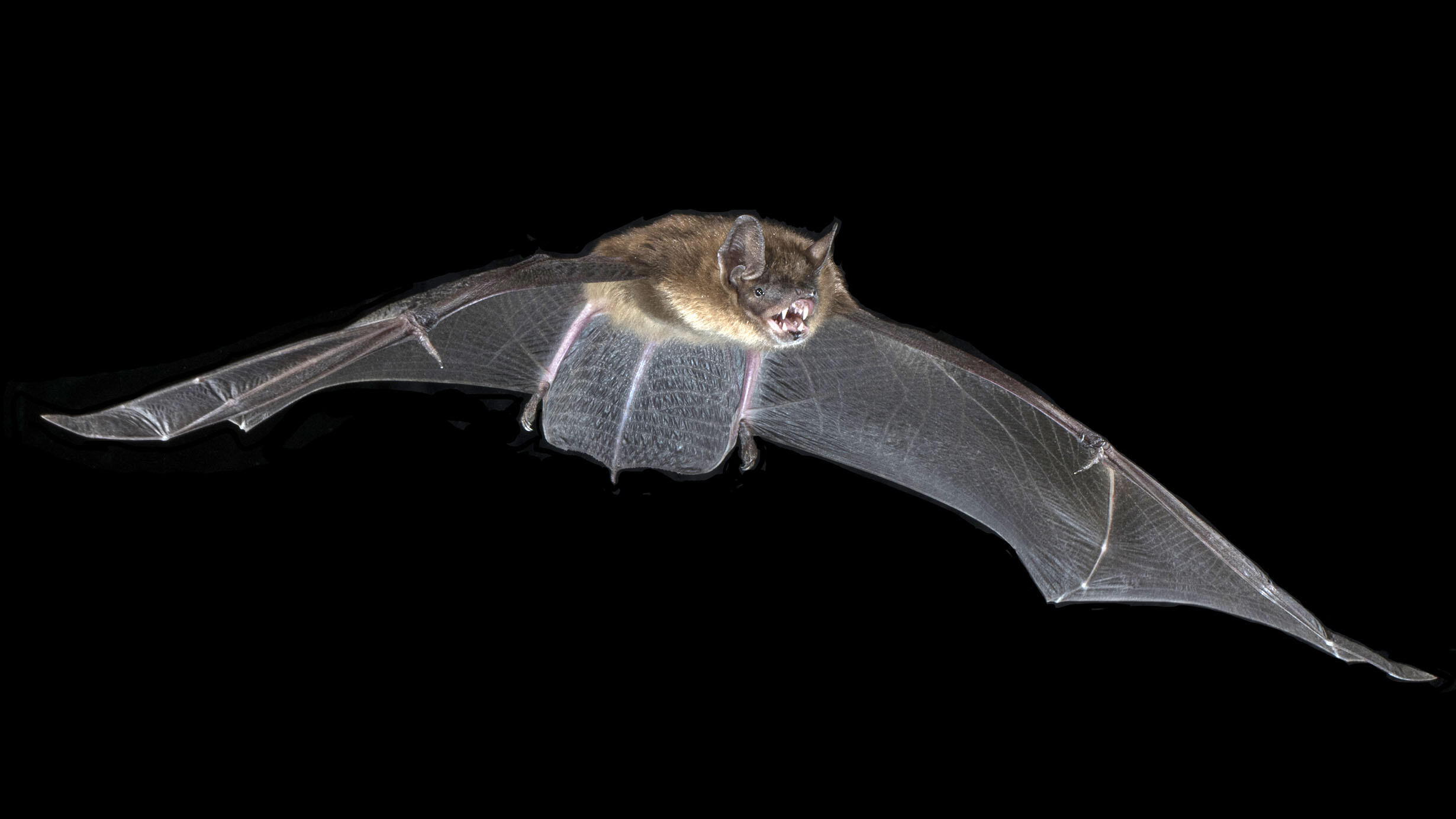 A big brown bat, a common North American species and a member of the “yang” group of bats with highly specialized inner ears.
A big brown bat, a common North American species and a member of the “yang” group of bats with highly specialized inner ears.A new study led by a Museum graduate student reveals how differences in microscopic inner ear structures led to different types of bat echolocation. The research, published today in the journal Nature, provides the first anatomical evidence for how two major groups of bats use echolocation differently to orient themselves, forage for food, and avoid obstacles while flying.
“Biologists have speculated that the two major groups of bats have different ways of seeing the world through sound,” said lead author Benjamin Sulser, a graduate student in the Richard Gilder Graduate School at the Museum. “This is the first time we found different neuroanatomies in the inner ear, which give these bats different ways of processing the echolocating signal.”
All living bats fall into one of two lineages: the Yangochiropterans, or yang bats—which include 80 percent of all echolocating bat species—and the Yinpterochiropterans, or yin bats. They are genetically distinct, but species within each group do not have many physical traits in common.
Sulser began investigating the bat inner ear when he was an undergraduate at the University of Chicago, finding that some bats lack a bony canal found in all other mammals that carries nerves between the ears and the brain. The canal, known as Rosenthal’s canal, is usually a solid wall of bone with microscopic holes through which the nerves travel, similar to a coffee filter.
“We thought this structure might be variable—we didn’t expect it to be gone,” he said.
To get a more complete picture, Sulser and his colleagues took CT scans of the skulls of 39 bat species. They found that that the absence of Rosenthal’s canal is unique to Yangochiropterans, though some do retain it. When yang bats do have it, however, the canal had much wider holes in the canal wall than those seen in yin bats—more like a pasta strainer than a coffee filter. The researchers then looked at the soft tissue and found that several yang bats had more nerves packed into this region than yin bats.
“The yang bats have a lot of variety in behavior, habitats, and diets, and this is matched by a similar variety in the ear itself in terms of the canal wall and the number of nerve bodies inside,” said Sulser. “These yang bats have a flexible toolkit that may have allowed them to evolve into new echolocation niches.”
Bats rely on echolocation to sense the world around them. Most yang bats use a type of echolocation that is frequency-modulated, using short pulses of sound between long intervals of silence. On the other hand, yin bats use constant frequency echolocation that relies on longer pulses.
“These are different ways of achieving the same goal,” said senior author Zhe-Xi Luo from the University of Chicago. “It’s like these two types of bats are speaking different dialects of a language.”